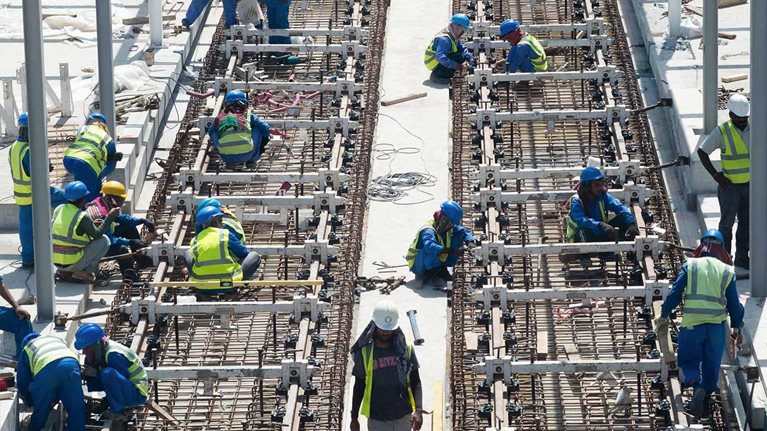Many Americans say they face persistent barriers to finding a job, even as employers are struggling to fill open positions in the most worker-friendly US labor market in half a century.
This apparent contradiction between official reports of a glut of job openings and the belief of many jobseekers that there are limited posts available is one of the key insights of the third edition of McKinsey’s American Opportunity Survey, which explores Americans’ perceptions of the current and future state of the US economy—and their place within it (see sidebar, “About the survey”).
Part of a series, this article presents our most recent survey’s findings on the job market and the reasons Americans give to explain why they are out of work and unable to find a new position. While news reports often focus exclusively on the surplus of jobs available in the aggregate, many survey respondents say they are facing a shortage of jobs that are a fit in terms of geography, skills, and nonwage considerations such as flexibility.
The unemployment rate was 3.5 percent in July,1 matching the 50-year low reached in February 2020. There are 1.9 open positions2 for every unemployed American, and employers are responding by raising wages and offering alternative working arrangements to attract and retain workers.
Yet many employed and unemployed respondents in the survey see a radically different reality, with the largest group (28 percent) saying the biggest barrier to their employment search is the limited availability of jobs (Exhibit 1). In addition, a US Bureau of Labor Statistics survey shows that there were 424,000 “discouraged workers,” a subset of workers who are not in the labor force, in July 2022 (similar to prepandemic levels).3 This suggests either that the jobs available aren’t the ones jobseekers want or that jobseekers don’t match the profile desired by employers.

Geographic mismatch
The survey confirms recent reports of large-scale churn in the labor market. According to the Bureau of Labor Statistics, 4.2 million people left their jobs4 in June to pursue other opportunities. Of the 25,000 respondents to the American Opportunity Survey, almost half say they have actively sought new work in the past 12 months, are currently looking for a new job, or plan to start looking in the next year (Exhibit 2). The numbers were highest among urbanites in all regions, pointing to dynamic job markets in those areas. At the same time, urban dwellers are most likely to say they have access to jobs, with 60 percent saying this was the case, compared with 48 percent of rural respondents and 57 percent of suburban respondents.

More urban respondents also say it would be easy to change careers or occupations. At the same time, majorities of urbanites in the West, the Midwest, the South, and the Northeast are most likely to express concern about the stability of their job.
About one-third of respondents in suburban and rural areas report a limited supply of jobs as a top three barrier in their search for new employment, compared with about a quarter of urban residents.
The survey also highlights one of the rigidities that could be keeping many from being employed. Only 33 percent of unemployed respondents looking for a job say they are willing to move for a job, and this rate is higher for unemployed respondents outside of urban areas. But of unemployed respondents looking for a job, 68 percent say they would be willing to work fully remotely.
This suggests that, rather than expanding in-person job opportunities in rural and suburban areas or luring rural and suburban jobseekers into urban centers, the greater availability of remote-working opportunities might help jobseekers find employment, particularly in rural areas. Without this shift, however, rural economies are likely to continue to have fewer employment opportunities.
Skills mismatch
The second most-cited barrier to employment is a perceived mismatch between jobseekers’ skills and the requirements of employers: 26 percent of respondents say a lack of experience, relevant skills, or credentials and/or education is preventing them from being hired (Exhibit 3). This is particularly true for women, who are 1.2 times more likely than men to say this was the case, and for people of color, especially Asian Americans, who are 1.5 times more likely than White respondents to cite a mismatch of skills. Women were less likely to report having pursued training, education, or credentialing opportunities to advance their career (34 percent, compared with 46 percent for men).

In addition, a quarter of employed respondents say a lack of skills is having a major or moderate impact on their performance, with about 40 percent of those in the two youngest age cohorts—18 to 24 and 25 to 34—the most likely to say this was the case. Respondents of color were more likely than White people to report this as well.
These findings underscore the need for employers to increase their learning budgets and commit to reskilling as a means of ensuring that their employees are equipped with the critical skills needed in the postpandemic era. Programs such as the Markle Foundation–led Rework America Alliance, in which McKinsey is a partner, could make a difference.
The alliance emphasizes skills-based, rather than credential-based, hiring, aiming to tap a pool of 106 million workers who have built capabilities through experience but whose abilities are often unrecognized because they don’t have a four-year college degree.
Mismatch of expectations and demand for flexibility
A third potential explanation for the mismatch between job vacancies and jobseekers involves a difference in expectations, particularly around pay and flexibility (Exhibit 4).

Forty percent of all job-seeking respondents say the desire for better pay or hours is driving their search for a new job. Although most groups say their pay allows them to have a good quality of life, there is significant divergence: just 50 percent of women say so, compared with 61 percent of men. Transgender and nonbinary respondents, as well as those who identify as non-Hispanic/Latino multiracial, Native Alaskans, and Native Americans, and those in the lowest income brackets, are least likely to agree with that statement.
After better pay or hours and better career progression, other top reasons for searching for a new job include flexible working arrangements, such as the ability to work from home or to bring a child to work (22 percent) and predictable hours and scheduling (16 percent).
An earlier article5 pointed out that 58 percent of employed workers—which, extrapolated from the representative sample, is the equivalent of 92 million people—are offered the option to work from home. For employers, offering flexibility around work from home may be the key to unlocking participation of those who are unemployed. For example, 68 percent of jobless respondents looking for a job, the equivalent of four million people, say they would be willing to work remotely.
With the appetite for remote work exceeding its availability, and with flexible arrangements cited as a core reason for searching for a new job, expanding flexible working arrangements might help attract and retain more workers.


